Below are a series of images of fossilized ripples from close to where I live and where I love to hike.
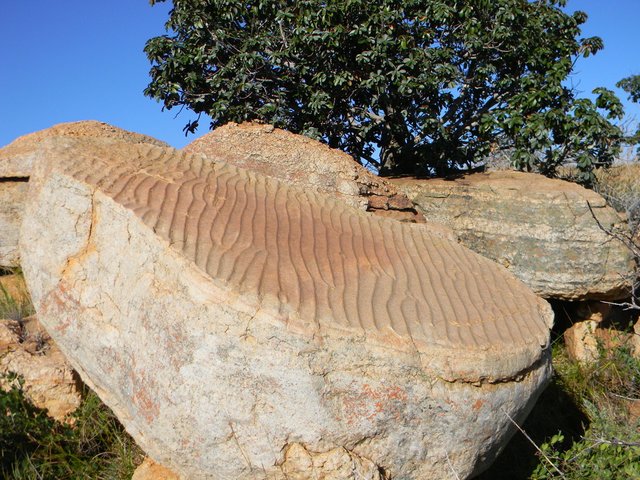
These ripples are common in quartzites of the Magalieberg mountain ranges.
The quatrzites are sand stones were baked solid by the volcanic intrusions of the bushveld Igneous complex.
The sand stones and other layers were deposited over the course of 300 million years in alternating shallow and deep water. At this time the earths atmosphere had very little oxygen and so they are yellow to white in color. The reddish stains, on some of them, are external only and more recent, from when the climate was tropical to sub-tropical.
The rock forms bedding planes along these ripple layers as these usually represent the termination or a change in deposition. The solidified rocks then more easily split apart along these bedding planes to reveal the ripples
These ripples are beautifully preserved and very similar to what we would find in an area with shallow moving water
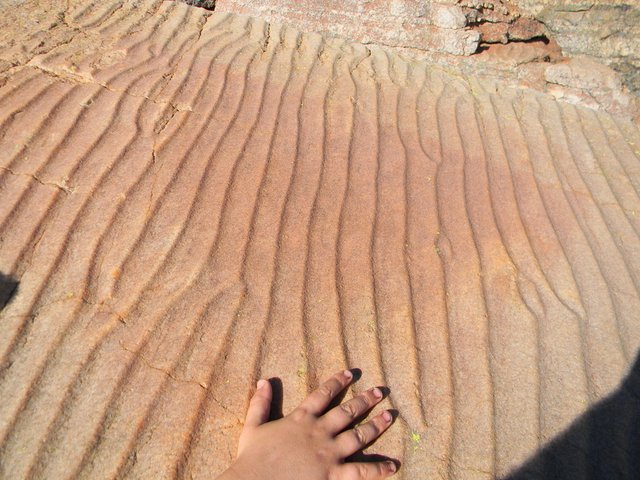
These are negative casts on the underside of a rock shelf where the lower rock with the ripples has broken away.
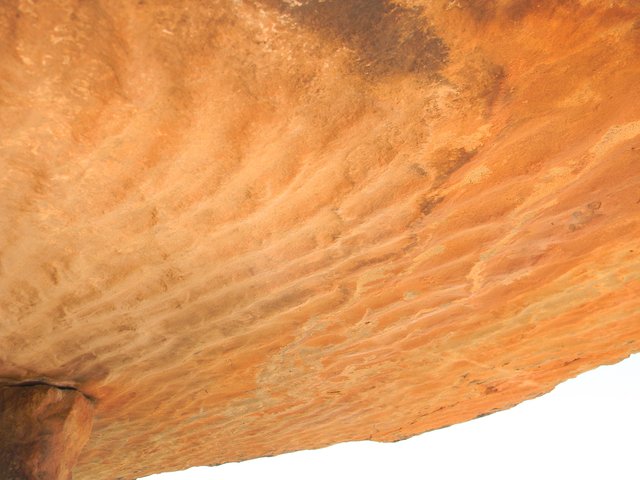
More common less well preserved ripples
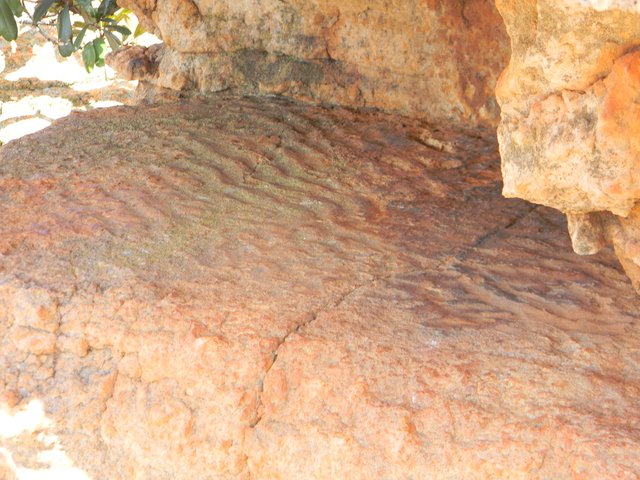
Ripples in two directions, showing changes in directions of currents while the sand was being deposited.
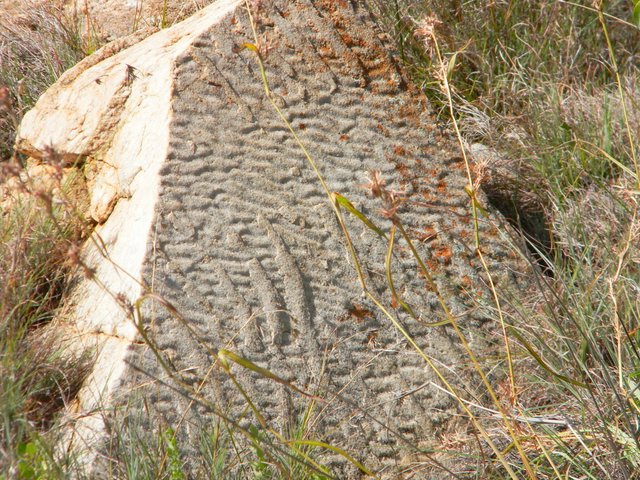
If you care to read more about the Magaliesberg mountain range Wikipedia has some nice stuff
https://en.wikipedia.org/wiki/Magaliesberg
Up until now I wouldn't have thought rocks could be interesting, but you have convinced me otherwise @gavvet. Nice post.
Downvoting a post can decrease pending rewards and make it less visible. Common reasons:
Submit
Rocks are like books, once you learn how to read their language, they are the library and archive of the earth
Downvoting a post can decrease pending rewards and make it less visible. Common reasons:
Submit
Good stuff here! Love geology!
Hi @gavvet, what's the process to get featured. Would love to feature one of my articles. Just did a write up on WikiLeaks exposing Hillary Clinton connection to ISIS. and another on a Journey That was 8 Years in the making
Downvoting a post can decrease pending rewards and make it less visible. Common reasons:
Submit
Hit me on steem chat, if its good and origional and different and...I'll look at it
Downvoting a post can decrease pending rewards and make it less visible. Common reasons:
Submit
Gotta love mother nature! Isn't she the best architect/designer there is? Such beauty!
Downvoting a post can decrease pending rewards and make it less visible. Common reasons:
Submit
ah @gavvet always an interesting story from my fellow saffer.
Downvoting a post can decrease pending rewards and make it less visible. Common reasons:
Submit
is fascinating as vestiges of millions of years are preserved 8]
Downvoting a post can decrease pending rewards and make it less visible. Common reasons:
Submit
Very similar to the petrified dune from the sandy desert. Nature is a strange sculptor, but very talented though.
Downvoting a post can decrease pending rewards and make it less visible. Common reasons:
Submit
Yip, very similar... sand stones from deserts are generally red... yellow or white from sea deposition
Downvoting a post can decrease pending rewards and make it less visible. Common reasons:
Submit
Our sands are usually more yellow or white at all. May be because our lands were under glacier a "few" times ago, later it melted and washed off red clay particles in sands. We have layers of bright sand and red clay practically without stones now. No rocks, no climbing. Plain landscape)
Downvoting a post can decrease pending rewards and make it less visible. Common reasons:
Submit
Gavvet, you are my spirit animal with these geology and archaeology posts. I've never thought to visit South Africa for their geological and fossil wonders, but now I'm tempted! Thank you!
Downvoting a post can decrease pending rewards and make it less visible. Common reasons:
Submit
Wow looks interesting, i never saw this kind of rocks. Thanks for posting.
Downvoting a post can decrease pending rewards and make it less visible. Common reasons:
Submit
The first picture looks like the footprint of a Birkenstock wearing giant. I'm not sure if you follow archaeology at all, but these ripples remind me of the tops of the stone structures at Gobekli Tepe. And the change of flow direction in the last picture makes it almost like like a latticework. Great shots man.
Downvoting a post can decrease pending rewards and make it less visible. Common reasons:
Submit
will have to check it out..
Downvoting a post can decrease pending rewards and make it less visible. Common reasons:
Submit
These are huge! It makes me happy to see that it's in a good state and almost untouched. Hope it stays for the next generations there
Downvoting a post can decrease pending rewards and make it less visible. Common reasons:
Submit
These are very common
Downvoting a post can decrease pending rewards and make it less visible. Common reasons:
Submit
intresting story, tnx
Downvoting a post can decrease pending rewards and make it less visible. Common reasons:
Submit
Cool! :) Do you also see this?
Downvoting a post can decrease pending rewards and make it less visible. Common reasons:
Submit
Wow, that's just amazing, how the hell does nature do this lol.
Downvoting a post can decrease pending rewards and make it less visible. Common reasons:
Submit
Like your photos, fellow South African. What is the hiking route's name you found these rocks?
Downvoting a post can decrease pending rewards and make it less visible. Common reasons:
Submit
Great pics keep up the good work
Downvoting a post can decrease pending rewards and make it less visible. Common reasons:
Submit
👍amazing post @gavvet
Downvoting a post can decrease pending rewards and make it less visible. Common reasons:
Submit
Downvoting a post can decrease pending rewards and make it less visible. Common reasons:
Submit